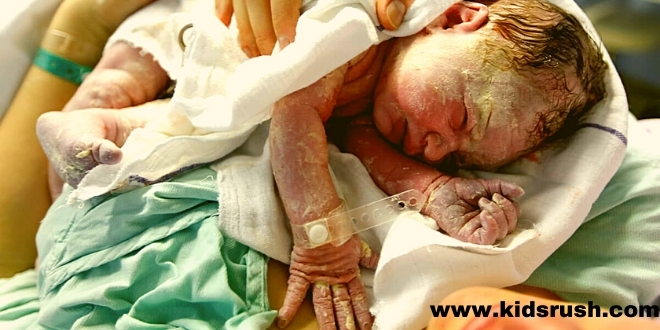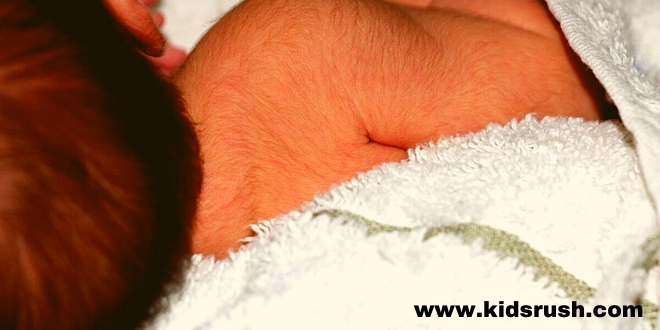Lanugo is the earliest form of hair development in humans. It usually forms in the gestation stage. Specifically between weeks nine and twelve of pregnancy, according to a study in the journal Advances in Clinical and Experimental Medicine.
It is common for babies to have this hair on their head, back, and abdomen, as well as other parts of the body at birth. In particular, lanugo can occur prematurely.
This type of hair is different from that of childhood and adulthood. It is soft, long, and dark hair, although it may not have pigmentation. It falls off the baby’s skin within a few weeks of birth when androgen production is minimized.
What is the role of lanugo?
The hair that grows in childhood and adulthood has the function of protecting the body from external factors, such as low temperatures or sun exposure, according to an article published in the International Journal of Molecular Sciences when referring to the hair of the scalp, for example.
This protective function is shared by the lanugo, which helps to maintain the body temperature of the fetus within the womb. Besides, it allows the vernix caseosa, a whitish substance that covers the baby and protects it inside the uterus, to adhere to the skin to prevent elements of the amniotic fluid from irritating the dermis.

Read Also: What foods you should not give to your 9-month-old baby?
When and how do babies lose lanugo?
The loss of lanugo is a natural process. It can occur in the final stage of pregnancy or the days after delivery.
We must remember that it works as a protective barrier, so it is not advisable to accelerate its elimination with massages since a baby’s skin is very sensitive and can be easily abused. This thin hair will fall out with rubbing from clothes or baths.
Some babies may have knotted lanugo, characterized by redness and swelling or multiple attached hairs, according to a case study released by The Journal of Pediatrics. In these situations, the doctor should be consulted to follow the best treatment, instead of doing home therapies that hurt the child’s skin.
Could lanugo appear in adulthood?
Although lanugo is more common in babies, it can also appear in adults as a sign of some diseases and eating disorders. Among them, we will mention the most relevant.
Read Also: Massage for babies: which type is best?
Anorexia nervosa, bulimia, or malnutrition

Those who suffer from eating disorders or do not consume the nutrients their body needs may have lanugo. According to an article available in the journal Dermato-Endocrinology, this is due to a nutritional deficiency that does not favor the production of body fat necessary to keep the body warm.
Although it is an explanation derived from the common physiological responses to the decrease in body fat, research is still needed to confirm this information. To eliminate lanugo caused by poor diet, the underlying health problem must be treated.
Hypertrichosis
Hypertrichosis is a disease that causes excessive growth of body hair in places where it is usually scarce. The only exceptions to the appearance of lanugo in hypertrichosis are the lips, palms of the hands, and the soles of the feet.
It can be congenital when the lanugo does not disappear after birth, but increases, or acquired when the appearance of lanugo occurs in the adult stage. According to a study in the Italian Journal of Pediatrics, acquired hypertrichosis is more common and can be caused by drugs, metabolic problems, and skin diseases.
There is still no treatment that improves the appearance and symptoms of this pathology. Those who suffer from the disease usually shave regularly and resort to waxing, however, the hair reappears. In some cases, these hair removal procedures irritate.

Read Also: Five tips for taking care of your baby’s hair
Learn to identify if lanugo is a cause for concern
Remember that lanugo on the skin of a newborn is usually normal. This is generally not a cause for concern unless you notice irritation or swelling around the hairs or it lingers for months after birth. If in doubt, it is best to go to the doctor and follow his recommendations.
In adults, lanugo can also appear and be a warning sign of an underlying disease that should not be ignored. Consulting the professional is essential to receive a timely diagnosis and begin treatment.
Now that you know what lanugo is, its function, and the diseases that are associated with its appearance, take care of both your health and that of your baby. You already know that there are normal situations and others that require more attention.
